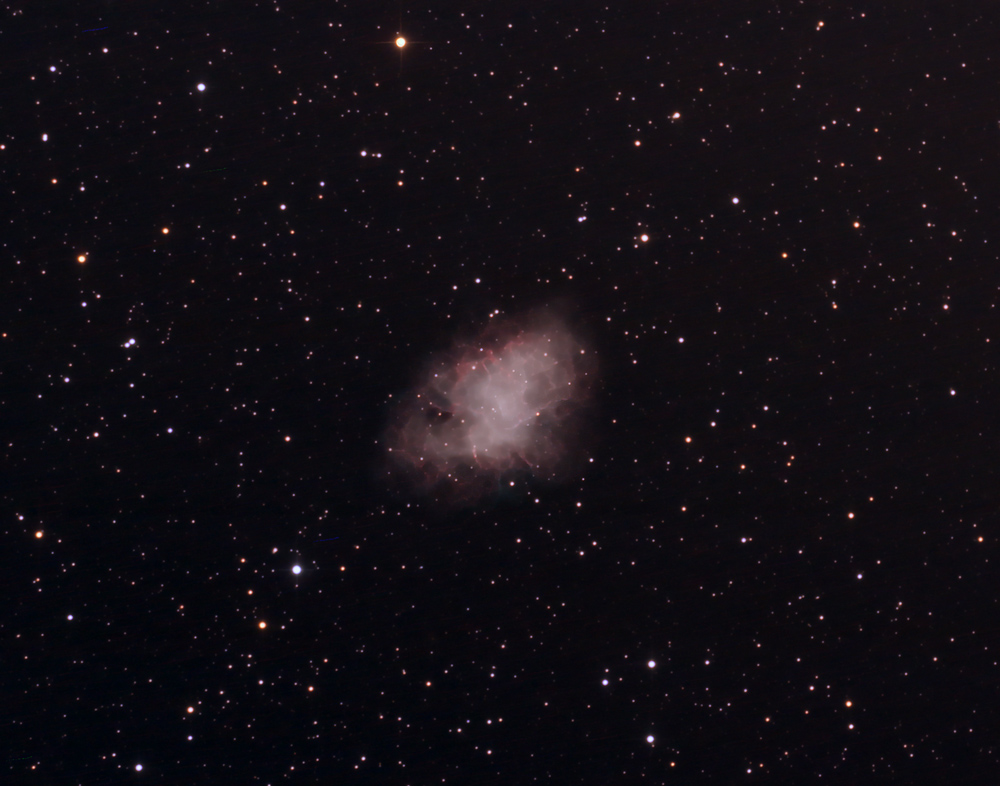 |
M1 - The Crab Nebula in Taurus
 |
Copyright 2008 Hap Griffin
In the year 1054 AD, Chinese astronomers recorded an explosion in the sky that was four times brighter than Venus and was visible in daylight for several weeks afterwards. From those ancient records, modern day astronomers have determined that the object pictured here, designated M1 in Charles Messier's famous list and known informally as the Crab Nebula, is the remnant of a colossal supernova explosion.
The structure of M1 consists of twisting red filaments of material from the progenitor star glowing at the hydrogen-alpha wavelength. The ghostly blue glow permeating the remainder of the nebula is caused by synchrotron radiation being emitted from the rapidly spinning pulsar at its center...the highly compressed core of the original star. The explosion of its outer layers compressed the core from an original size similar to that of our sun into an object that is only about 10 kilometers in diameter. Thus its mass density is trillions of times that of lead. Since the core is much smaller than the original star but retains much of its rotational momentum, its rotation has sped up to where it is now rotating at 30 revolutions per second...much as a spinning ice skater spins more rapidly as she pulls her arms in. The rotating core spews out a powerful stream of high energy electrons from its magnetic poles which aim in our direction once each rotation. It was these powerful beams of radiation that were first detected in 1968 pulsing at a rate of 30 times each second that at first led radio-astronomers to believe that they may have found a sign of an intelligent civilization. Once the pulsing source was correlated with the optical location of the Crab supernova remnant, the nature of this new class of star was determined. In the years since, many other pulsars have been detected.
M1 is expanding at a rate of approximately 1800 kilometers per second and now has a diameter of roughly 10 light-years. It lies at a distance of 6300 light years from earth.
Date/Location:
February 9, 2008 Griffin/Hunter
Observatory Bethune, SC
Instrument: Canon 40D (modified IR filtering) Digital SLR through
10" F/4.7 Newtonian
Focal Ratio: F/4.7
Guiding: Auto via SBIG ST-402 through Orion ED80 refractor
Conditions: Visually clear but very windy
Weather: 50 F
Exposure: 90 minutes total (30 x 3 minutes @ ISO 800)
Filters: Baader UV/IR block internal to camera
Processing: Focused, captured, calibrated, aligned, Digital Development,
Richardson-Lucy deconvolution in ImagesPlus V3.0. Final tweaks in Photoshop
CS2.